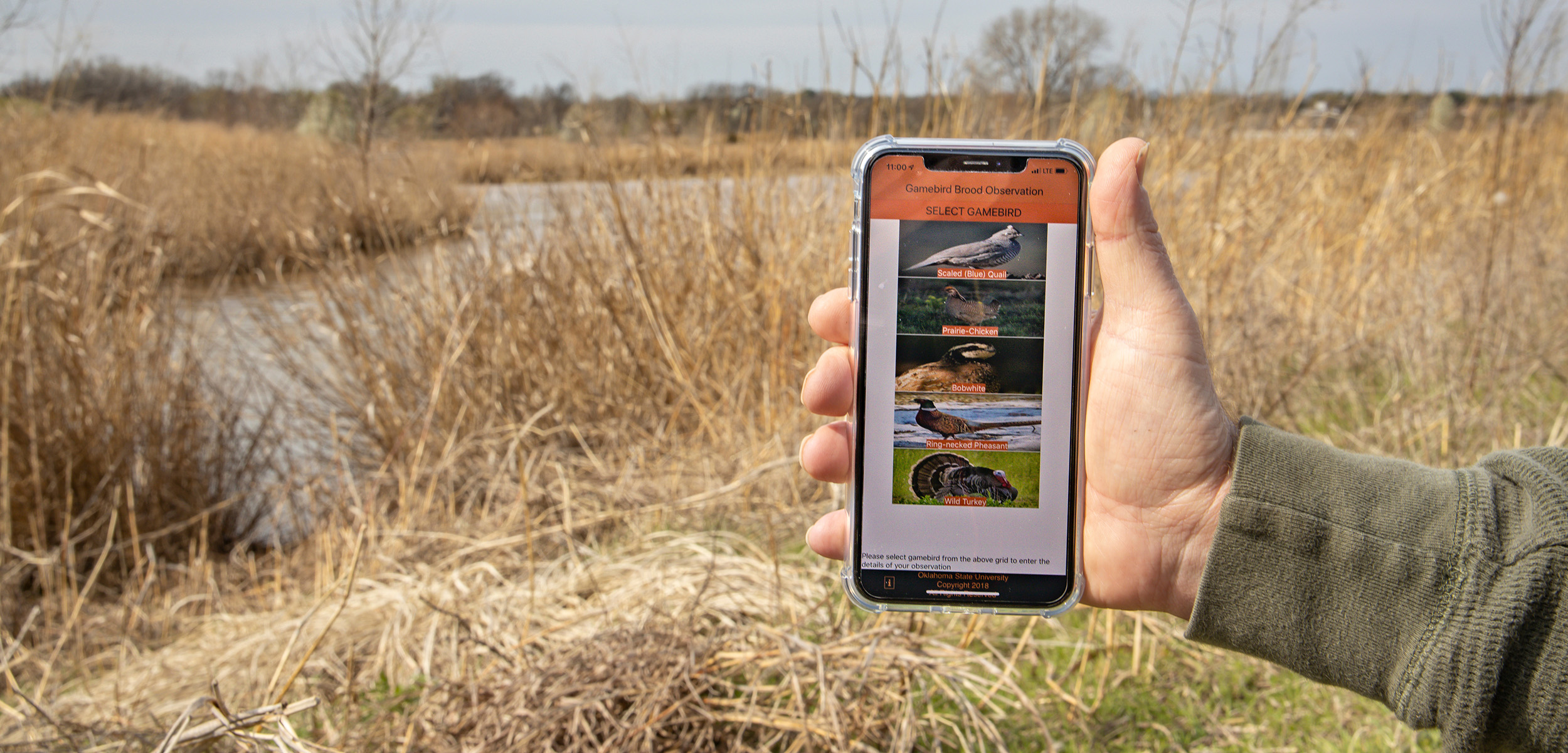
Wildlife biologists gain valuable information from smartphone app
Friday, May 7, 2021
Media Contact: Trisha Gedon | Communications Specialist | 405-744-3625 | trisha.gedon@okstate.edu
A smartphone app is helping wildlife biologists learn new information about the annual reproduction of gamebirds in Oklahoma.
Wildlife specialists at Oklahoma State University joined forces with experts from the Oklahoma Department of Wildlife Conservation just two years ago to develop the Gamebird Brood Observation application. Information entered by app users was intended to help specialists gain a better understanding of gamebird reproduction in Oklahoma, said Dwayne Elmore, OSU Extension wildlife specialist and Bollenbach Chair in the university’s Department of Natural Resource Ecology and Management. The program has exceeded expectations.
“In the two years that we’ve been using data from the app, we’ve learned there is tremendous fluctuation between years and when and how much gamebirds reproduce,” Elmore said. “These fluctuations are largely driven by the weather.”
For example, the extreme cold weather conditions Oklahoma experienced in February this year likely will have a big effect on quail populations. Weather aside, however, bobwhite nesting in Oklahoma can vary greatly. Birds normally nest between late May through about mid-July, but Elmore said that period can stretch from April through October. He also indicated the best production years are those with an early start and steady production into fall.
“The information gathered over the past year was from users in 35 counties across the state,” Elmore said. “We had a total of 168 observations, most of which were for wild turkey and northern bobwhite, along with a few reports for ring-necked pheasant, scaled quail and prairie chickens, as well.”
John Bellah has been an avid bird hunter for 30 years and uses the app because it helps wildlife biologists get a more accurate picture of brood success.
“This, in turn, gives hunters a better picture of what our fall hunting season will look like. The data can help pinpoint the areas where birds have been more productive, and also can give better information regarding the timing of certain weather events and how they affect nesting and brook reading,” Bellah said. “Using the app also allows me to be part of the solution to the decline of our ground-nesting gamebirds rather than be a part of the problem.”
The app is free to download through most commercial portals under keywords “gamebird observation” and can be used with both iPhone and Android platforms. Hunting results are summarized regionally and not made public in a way that would increase hunting pressure to specific locations.
Bellah encourages landowners and producers to use the app to more objectively quantify the number of birds they see.
“I always seem to hear that farmers and ranchers are seeing more birds than they’ve ever seen, and we end up having a disappointing year,” he said. “Using the app will give some credibility and allow for more specific investigations regarding large, local declines.”
Elmore said he hopes even more people will download the app and use it this year.
“We’d like to thank everyone who has downloaded and used the app the last couple of years. It’s very easy and quick to enter information, taking no more than about 30 seconds,” Elmore said. “This type of information is so valuable and helps the wildlife department deliver more reliable hunting forecasts.”
OSU Extension also offers a variety of other free applications that can be used with smartphones.
